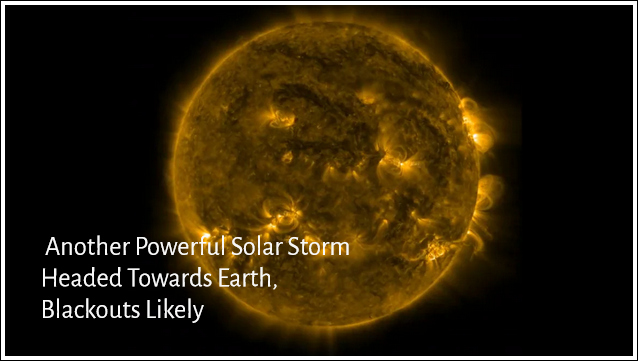bio tech
There Was Another Strong Solar Storm Heading Toward Earth, Blackouts Possible
Published
3 weeks agoon

The solar storm has already caused disruptions to shortwave radio on Earth, but fortunately the newest eruption’s coronal mass ejection (CME) will not affect our planet.
The Sun is directing a strong stream of energetic particles known as a solar storm toward Earth, which may cause radio blackouts and the northern lights, or aurora borealis. As per NASA’s spaceweather.com, on May 27, a class X2.8 storm—one of the most powerful solar outbursts in recent memory—erupted from the sunspot AR3664. “Giant explosions on the sun that send energy, light, and high speed particles into space” is how NASA describes the strongest solar flares, called X-class flares.
The solar storm has already caused disruptions to shortwave radio on Earth, but fortunately the newest eruption’s coronal mass ejection (CME) will not affect our planet.
According to Ryan French, a solar physicist at the National Solar Observatory in Boulder, Colorado, this starburst caused a massive coronal mass ejection to explode on the side of the Sun facing away from us, as he wrote on X.
When a solar storm reaches Earth, it travels at the speed of light and ionizes, or charges, the upper atmosphere of the planet. Long-distance communication is made possible by the greater density environment created by ionization, which allows high-frequency shortwave radio signals to travel through.
The electrons clash with the radio waves more frequently after being struck by these charged particles, which causes signals to deteriorate or disappear entirely.
Post a comment
The scientific community is increasingly concerned about AR3664, which is scheduled to reappear on June 6. The eruptions at that time have the potential to cause more geomagnetic storms that could have a negative effect on Earth.
You may like
-


Secrets of the Google Search algorithm disclosed by a leaker
-


Preparing to launch, NASA’s PREFIRE mission will investigate Earth’s polar regions
-


Google RealFill, an AI-powered generative image completion model, was spotted in a trademark listing
-


During Elon Musk’s visit, Tesla removes significant regulatory obstacles for self-driving cars in China
-


Google and Samsung confirm their collaboration for ‘exciting’ AI-powered experiences
-


WhatsApp Passkey Support is Available for iPhone Users: How to Set Up

